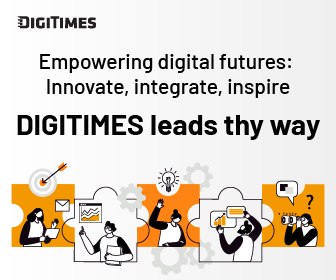Taiwan has officially transitioned into a super-aged society. The swiftly increasing older demographic and the labor force deficit have resulted in a significant scarcity of nursing personnel. By 2030, it is projected that the global demand for nursing personnel will rise by 5.5 million to 7.4 million, necessitating an increased patient care burden on medical professionals.
Simultaneously, the quality standards of contemporary medical care are perpetually advancing, while the nursing operational procedures have become increasingly intricate and burdensome, hence augmenting the workload and time constraints faced by nursing personnel. Confronted with multiple problems, medical institutions must devise ways that sustain high-quality care while alleviating the pressure on nursing personnel. In response, Far Eastern Memorial Hospital (FEMH) implemented the ASUS VivoWatch smart band to significantly enhance nursing efficiency and service quality.
The aging population affects medical care: Smart wearables help
Liu, Cai-wen (transliterated from Chinese), supervisor of the FEMH Nursing Department, stated that the ASUS VivoWatch, a wearable produced by ASUS, can automatically measure patients' vital indicators such as heart rate, blood pressure, and blood oxygen levels. It transfers this data to the hospital system in real time using its built-in Bluetooth module, allowing for continuous 24-hour physiological monitoring. Furthermore, the device boasts a pleasant and lightweight design, suitable for extended usage, which can substantially reduce discomfort and limit interference with patients' daily activities. The FEMH Information Technology Department has partnered with the ASUS team to link the wearable device to the hospital's information system, incorporating it with the early warning system to provide an automated health risk assessment process. Upon detecting abnormal vital signs in a patient, an alert notification can be promptly generated to improve care response efficiency and ensure patient safety.
Liu stated that this solution effectively addressed numerous clinical pain points. Firstly, nursing workers are no longer required to measure physiological data during the night to prevent disrupting patients' sleep. Secondly, the wearable device autonomously captures physiological data, alleviating the burden on nursing staff regarding manual measurement and documentation; thirdly, high-frequency automatic monitoring, in conjunction with an early warning system, facilitates the medical team in identifying early indicators of deteriorating conditions, thereby enhancing patient safety. This smart wearable is being utilized in the VIP and general acute wards at FEMH, serving inpatients aged 18 and above. An Institutional Review Board (IRB) has authorized the assessment of the proposal's ethical criteria and safety.
Clinical advantages are reinforced in a variety of ways, resulting in a win-win situation for both patients and nurses
The efficiency of FEMH nursing operations has been substantially improved by the implementation of ASUS VivoWatch wearable devices. The automated measurement and data recording capabilities allow nursing staff to focus on patient care and emergency interventions, thereby achieving the objective of "minimizing pressure and workload." The ASUS VivoWatch wearable is seamlessly incorporated with the EWS system, allowing the nursing team to promptly identify abnormal patient signs. This integration reduces the occurrence of abrupt deterioration incidents and improves patient safety. The real-time update function of physiological data boosts the quality of care by enhancing the speed and accuracy of decision-making for the medical team. Additionally, patients are less frequently disturbed during sleep by traditional measurement methods, which strengthens hospital comfort and recovery outcomes.
Liu noted that FEMH and ASUS will continue to expand the use of the wearable device across wards and for patients with various diseases, while also improving technology integration. Simultaneously, they will promote the standardization of smart care by using technology to simplify consistent nursing operational procedures, so boosting overall medical service quality and the hospital's potential for long-term development. It is hoped that by combining clinical nursing experience with technical innovation, we would be able to handle the caregiving challenges posed by an aging population and attain the long-term care aim of "nursing personnel and technology collaborating," Liu concluded.




